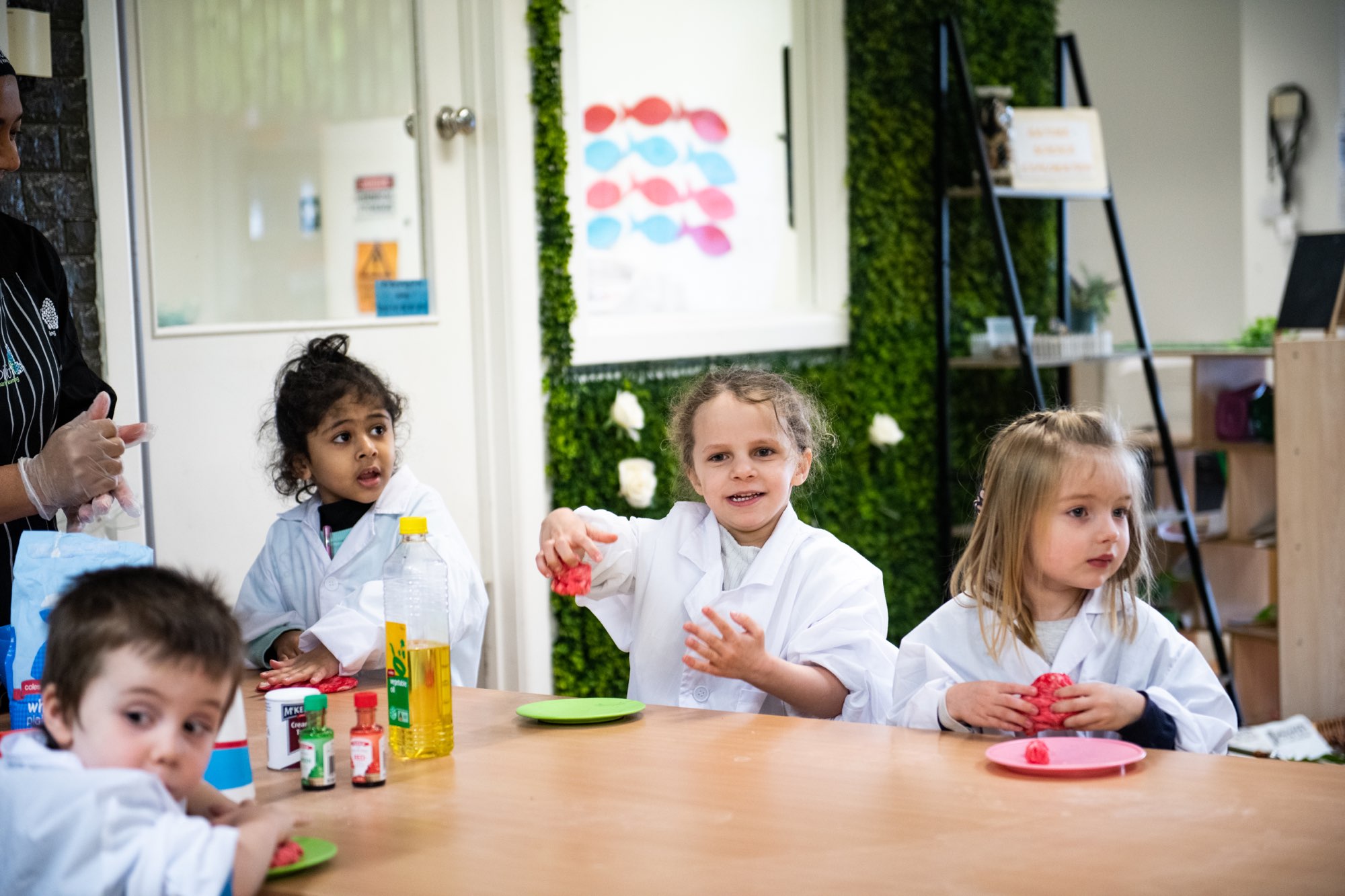
In the realm of childhood imagination, there exists a substance that captures the essence of wonder and creativity: slime. What may seem like a simple gooey material holds within it a universe of benefits for young minds. Beyond just being a playful activity, slime play serves as a gateway to a world of sensory exploration, offering a myriad of developmental advantages for children.
Benefits of Slime Play for Toddlers
Play time is important for your toddler’s learning and development. When your child plays, it gives them many different ways and times to learn. Slime play is one of many fun play ideas you can try, and it comes with a myriad of benefits.
Engagement of the Senses
Sensory play is crucial for children’s development, as it engages multiple senses simultaneously. Slime, with its unique texture, colour variations, and even scented options, provides an ideal medium for sensory stimulation. As kids squish, stretch, and mold the slime, they are actively processing tactile information, refining their fine motor skills, and enhancing hand-eye coordination.
Calming and Therapeutic Effects
The tactile experience of playing with slime can have a calming effect on children. The rhythmic movements involved in manipulating slime can be soothing, making it a therapeutic tool for children who may experience sensory sensitivities or anxiety. Many parents and educators have noted how slime play helps children relax and focus, making it an excellent activity for sensory breaks or quiet playtime.
Creativity and Imagination
One of the magical aspects of slime is its transformative nature. With a simple blob of slime, children can create endless shapes, creatures, and imaginary worlds. This open-ended play encourages creativity and imagination, allowing kids to explore their artistic abilities and storytelling skills. From crafting slime monsters to designing slime galaxies, the possibilities are as vast as a child’s imagination.
Scientific Exploration
Slime play also introduces children to basic scientific concepts in a fun and hands-on way. They can observe how different ingredients interact to create slime, learning about measurements, ratios, and cause-and-effect relationships. This experimentation fosters a curiosity for science and encourages critical thinking as children hypothesize and experiment with various slime recipes.
Social Interaction and Collaboration
Slime play is often a social activity, especially in group settings such as classrooms or playdates. It promotes social interaction as children share materials, exchange ideas, and collaborate on slime projects. These collaborative experiences teach valuable skills like communication, teamwork, and problem-solving, laying the foundation for positive social development.
Safety and Supervision
While slime play offers numerous benefits, it’s essential to ensure safety and supervision, especially concerning younger children or those prone to putting things in their mouths. Using non-toxic, child-safe ingredients and providing guidance on proper handling and cleanup are crucial aspects of promoting a safe and enjoyable slime play experience.
A Valuable Tool for Development
In conclusion, slime play is not just a fun pastime; it’s a valuable tool for children’s holistic development. Through sensory engagement, creative expression, scientific exploration, social interaction, and safety considerations, slime play offers a host of benefits that contribute to a child’s cognitive, emotional, and social growth. So, next time you see a child delighting in the squishy goodness of slime, know that they are not just playing—they’re learning, imagining, and growing.
Discover more messy play ideas for toddler development.